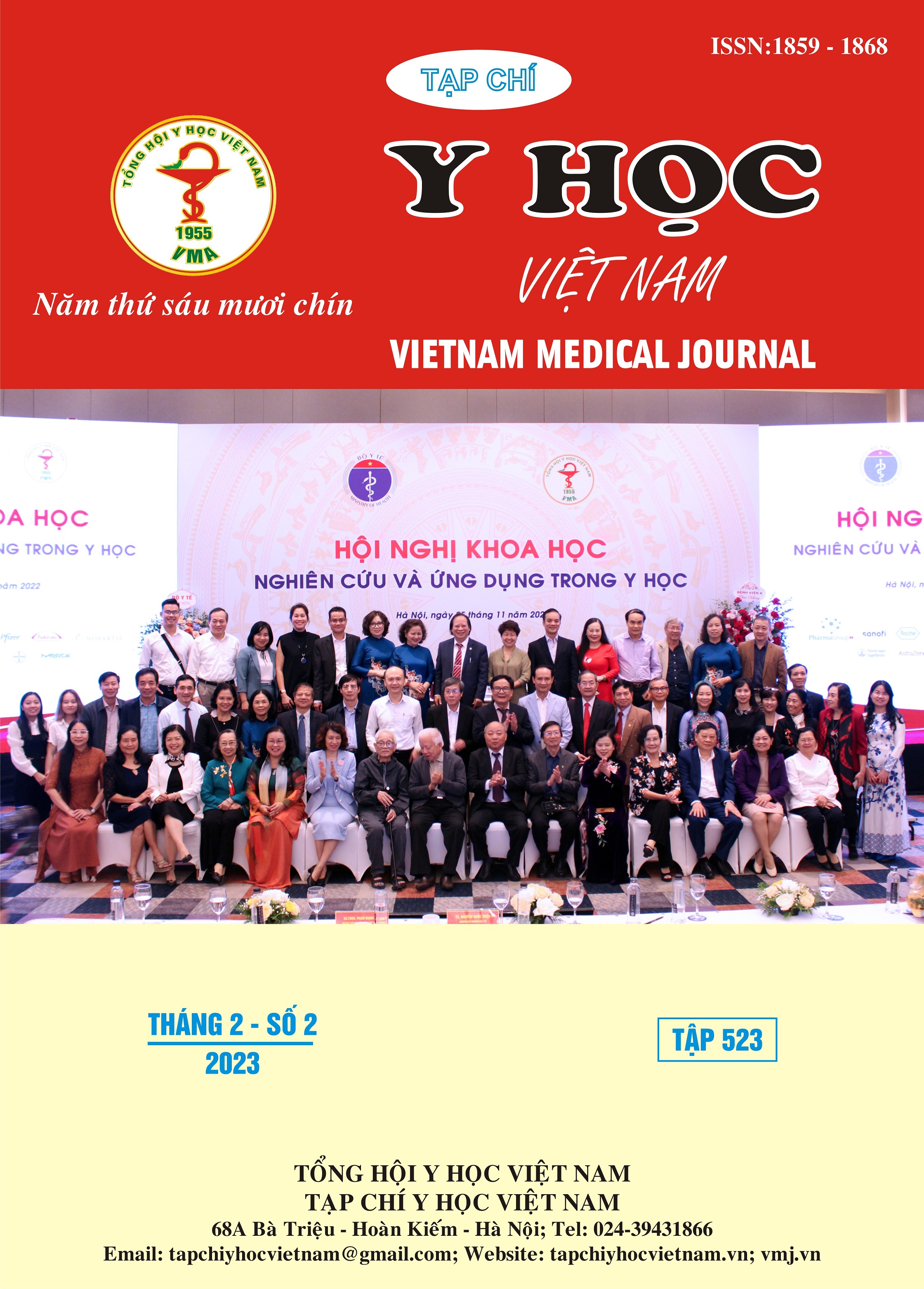STUDYING THE ROLE OF THE ANTI-INFLAMMATORY DRUG BROMFENAC FOR PREVENTING PSEUDOPHAKIC CYSTOID MACULAR EDEMA
Main Article Content
Abstract
Objective: Studying the role of the anti-inflamatory drug bromfenac for preventing pseudophakic cystoid macular edema. Method : Prospective descriptive study on 184 eyes after phacoemulsification, then, evaluate the role of the anti-inflammatory drug Bronuck 0.1% (bromfenac 0.1%) by monitoring CST, CV, CAT indicators on Optical Tomography Machine Cirrus HD –OCT 5000 through the time points before surgery, 1 week, 5 weeks, 9 weeks after surgery from October 2021 to the end of August 2022 at Ha Dong Eye Hospital. Results : Bronuck's ability to prevent cystic macular edema (Bromfenac 0.1%) in combination with topical dexamethasone was better than with dexamethasone as local monotherapy with morbidity rates of 0% in the Bromfenac + Dexamethasone group and 2.2% in the dexamethasone monotherapy group. Change in CST in the group adding Bromfenac 2.97 ± 23.48, 1.5 ± 10.25 µm was better than with Decamethasone alone, 15.60 ± 39.77, 13.2 ± 40.5 µm at 5 weeks, 9 weeks after surgery with p < 0.05. The degree of visual acuity improvement compared with the 5 weeks and 9 weeks is equivalent to p of 0.25 and 0.745, respectively. Bromfenac+ Dexamethasone is 0.5699 ± 0.2327 and 0.5772 ±0.2396 LogMAR; Dexamethasone alone 0.5872 ± 0.2236 and 0.5897 ± 0.2257 LogMAR. Conclusion: Using OCT as a non-invasive, reliable and safe subclinical means allows us to detect, diagnose, monitor, and treat cystic macular edema (PCME). Using Bromfenac solution combined with Dexamethasone has a better effect on prevention of cystic macular edema than Dexamethasone monotherapy.
Article Details
Keywords
Bromfenac 0.1%, Pseudophakic Cystic macular edema (PCME), OCT
References
2. Campa C, Salsini G, Perri P. Comparison of the Efficacy of Dexamethasone, Nepafenac, and Bromfenac for Preventing Pseudophakic Cystoid Macular Edema: an Open-label, Prospective, Randomized Controlled Trial. Curr Eye Res. 2018; 43(3):362-367. doi:10.1080/02713683.2017.1396615
3. Ursell PG, Spalton DJ, Whitcup SM, Nussenblatt RB. Cystoid macular edema after phacoemulsification: relationship to blood-aqueous barrier damage and visual acuity. J Cataract Refract Surg. 1999;25(11):1492-1497. doi:10.1016/s0886-3350(99)00196-0
4. Flach AJ. The incidence, pathogenesis and treatment of cystoid macular edema following cataract surgery. Trans Am Ophthalmol Soc. 1998;96:557-634.
5. Kessel L, Tendal B, Jørgensen KJ, et al. Post-cataract prevention of inflammation and macular edema by steroid and nonsteroidal anti-inflammatory eye drops: a systematic review. Ophthalmology. 2014;121(10):1915-1924. doi:10.1016/j.ophtha.2014.04.035
6. Wielders LHP, Schouten JSAG, Nuijts RMMA. Prevention of macular edema after cataract surgery. Curr Opin Ophthalmol. 2018;29(1):48-53. doi:10.1097/ICU.0000000000000436
7. Mathys KC, Cohen KL. Impact of nepafenac 0.1% on macular thickness and postoperative visual acuity after cataract surgery in patients at low risk for cystoid macular oedema. Eye (Lond). 2010;24(1):90-96. doi:10.1038/eye.2009.10
8. Zaczek A, Artzen D, Laurell CG, Stenevi U, Montan P. Nepafenac 0.1% plus dexamethasone 0.1% versus dexamethasone alone: effect on macular swelling after cataract surgery. J Cataract Refract Surg. 2014;40(9):1498-1505. doi: 10.1016/ j.jcrs.2013.12.023
9. Wielders LHP, Schouten JSAG, Winkens B, et al. European multicenter trial of the prevention of cystoid macular edema after cataract surgery in nondiabetics: ESCRS PREMED study report 1. J Cataract Refract Surg. 2018;44(4):429-439. doi:10.1016/j.jcrs.2018.01.029


